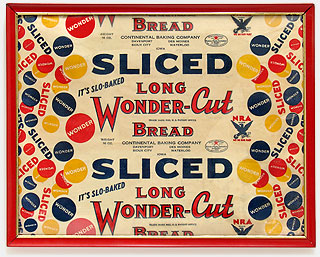Inventions of the Past: Sliced Bread

Now you can get your Bread….Sliced!
In today’s society, people live in this complex never ending technological phenomenon in which the world heavily relies on. Have you ever wondered how people lived and what was currently in at the time? In this article I examined a history lesson of Sliced Bread.
Before sliced bread, people used to either buy or bake loaves of bread and would have to manually cut their own slices; resulting in disproportionate sizes and vulnerability to stale bread.
In 1912, American inventor, Otto Frederick Rohwhedder (1880-1960), had a brilliant idea of working towards inventing a machine that would cut bread slices evenly; and desired to market his invention to bread companies. Although, it seemed like a great idea at first, many bakers had their doubts. Bakers feared that the marketing of bread slicing machines would make their bread supply become stale much quicker.
A challenge proposed by the bakers to Rohwedder was, how is it possible to sell loaves of sliced bread while it still maintain it’s fresh “out of the oven” qualities?
The solution: wrap it in a plastic bag.
In 1927, Rohwedder then devised a machine that would wrap the loaf in a bag after it has been sliced. Patented and sold his product to the Chillicothe Baking Company in Chillicothe, Montana, and it became a major pitch in 1928. People could not get enough of sliced bread.
Up until the Great Depression (1929), it was not a issue for Rohwhedder, although the small town Chillicothe Baking company was bought out by the Micro-Westco Company, that was when his invention really took off when they marketed his new bread slicing and plastic wrapping invention to Wonder® Bread.
Wonder® Bread by this time was already selling units across the whole country as uncut loaves. With Rohdwedder’s new invention, the Wonder®Bread brand became a national hit. Over time, other bread companies wanted to have sliced bread as well, resulting into simply just “bread”, not “sliced bread”, the invention not only boosted sales in bread but also in spreads, such as butter and jams.

Born and raised in the Golden State. Currently a Senior at Lincoln High School. Occasionally seen wearing a green golfer hat or sometimes a red hunting...














